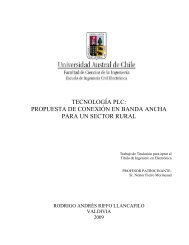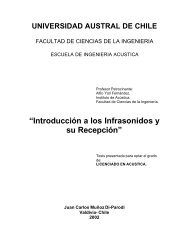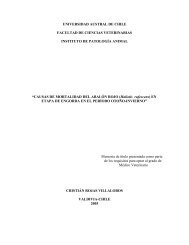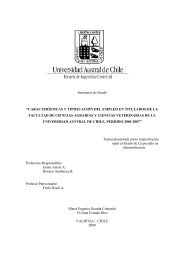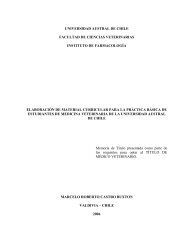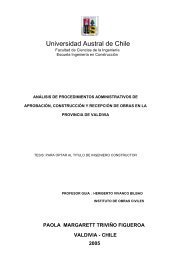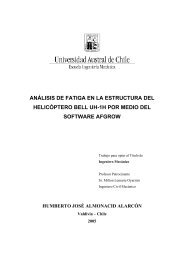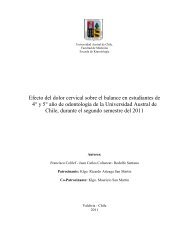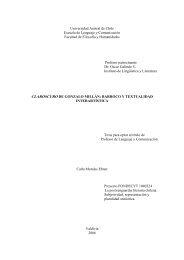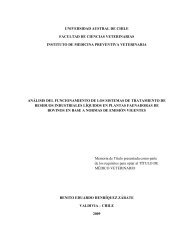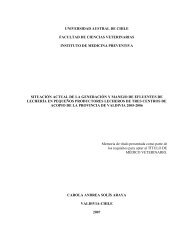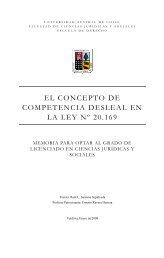Diversidad y control biológico de insectos - CyberTesis UACh ...
Diversidad y control biológico de insectos - CyberTesis UACh ...
Diversidad y control biológico de insectos - CyberTesis UACh ...
You also want an ePaper? Increase the reach of your titles
YUMPU automatically turns print PDFs into web optimized ePapers that Google loves.
explanation than no toxicity of the insectici<strong>de</strong>, consi<strong>de</strong>ring significant effects of lambda-<br />
cyhalothrin were <strong>de</strong>tected twice in the following sampling dates and that lambda-<br />
cyhalothrin toxicity to carabids is well documented in literature (Huusela-Veistola, 1996;<br />
Koss et al., 2005; Prasifka et al., 2005; White et al., 1990), though the response is always<br />
species-specific.<br />
F. nebroi<strong>de</strong>s showed a consistent response across the study. Activity <strong>de</strong>nsity in the lambda-<br />
cyhalothrin plots was lower than <strong>control</strong> in the three post sampling dates, although the<br />
differences were significant at α= 0.05 only at the beginning and at the end of the sampling<br />
period, while the response at the intermediate sampling date was not statistically significant<br />
(p=0.29). Other carabids with comparable body size to F. nebroi<strong>de</strong>s can move several<br />
meters per day (Thacker and Dixon, 1996), but insectici<strong>de</strong> plots did not recover the pre-<br />
treatment populations levels at any sampling date.<br />
The negative effect of lambda-cyhalothrin on F. aerea population was evi<strong>de</strong>nt two months<br />
after spray, but not one month after spraying. Absolute numbers increased with time in all<br />
treatments, but the increase was much more marked in the <strong>control</strong> plots than in insectici<strong>de</strong><br />
plots, in the last sampling date. This species overwinters as adult, thus the increase should<br />
be attributed to adults moving from no treated areas to plots and not to new cohorts of<br />
adults from larvae that complete their cycle.<br />
The absence of barriers, the presence of migrant sources and the plot size would have<br />
facilitated (or at least no make more difficult) the re-colonization of treated plots by F.<br />
nebroi<strong>de</strong>s and F. aerea. The reasons why the re-colonization was not accomplished as<br />
expected are not clear. If the insectici<strong>de</strong> had persisted in the treated plots, direct mortality<br />
or repellence could be acted on beetles, but lambda-cyhalothrin has been reported to persist<br />
less than 2 weeks in field (Hill and Inaba, 1991; Mathirajan et al., 2000). In addition,<br />
lambda-cyhalothrin <strong>de</strong>creases when temperature increases (Huusela-Veistola, 1996) and<br />
temperature at November-December in the region (late spring and early summer) are<br />
typically higher than October (mid spring).<br />
Several authors have reported that carabids do <strong>control</strong> lepidopteran pests (French et al.<br />
2004; Frank and Shrewsbury, 2004; Toft and Bil<strong>de</strong>, 2002). The carabid species active at the<br />
sampling period likely would not be predators of Dalaca sp. because of their body size. It is<br />
generally noted a positive correlation between the size of the beetles and the size of the<br />
60



